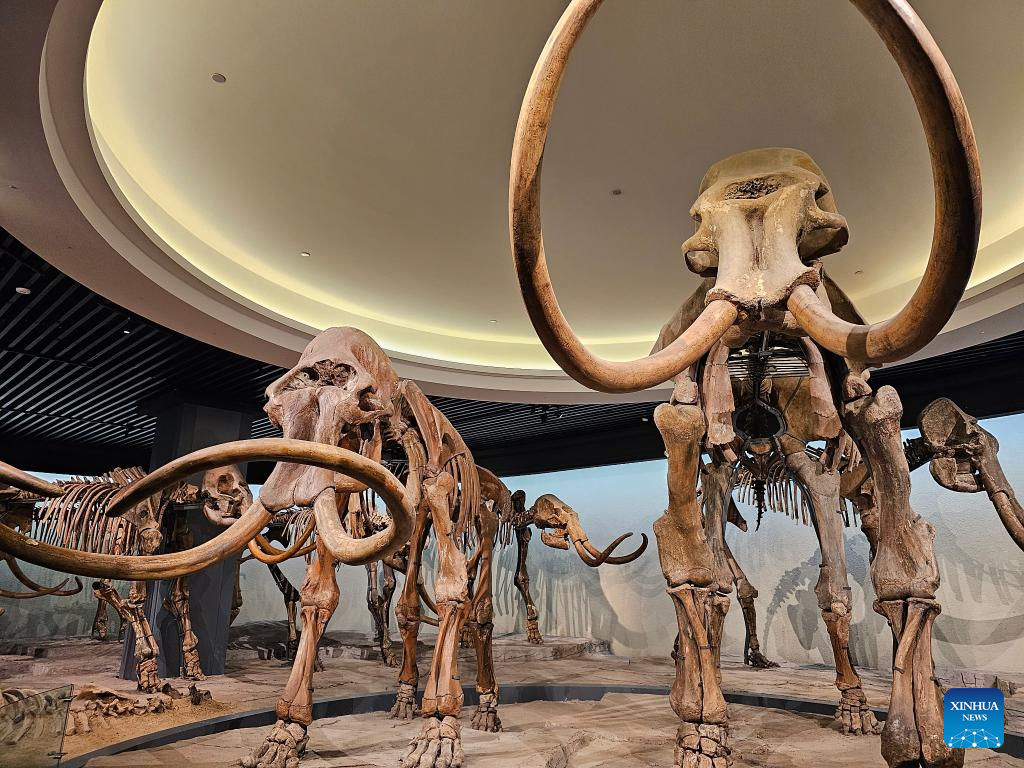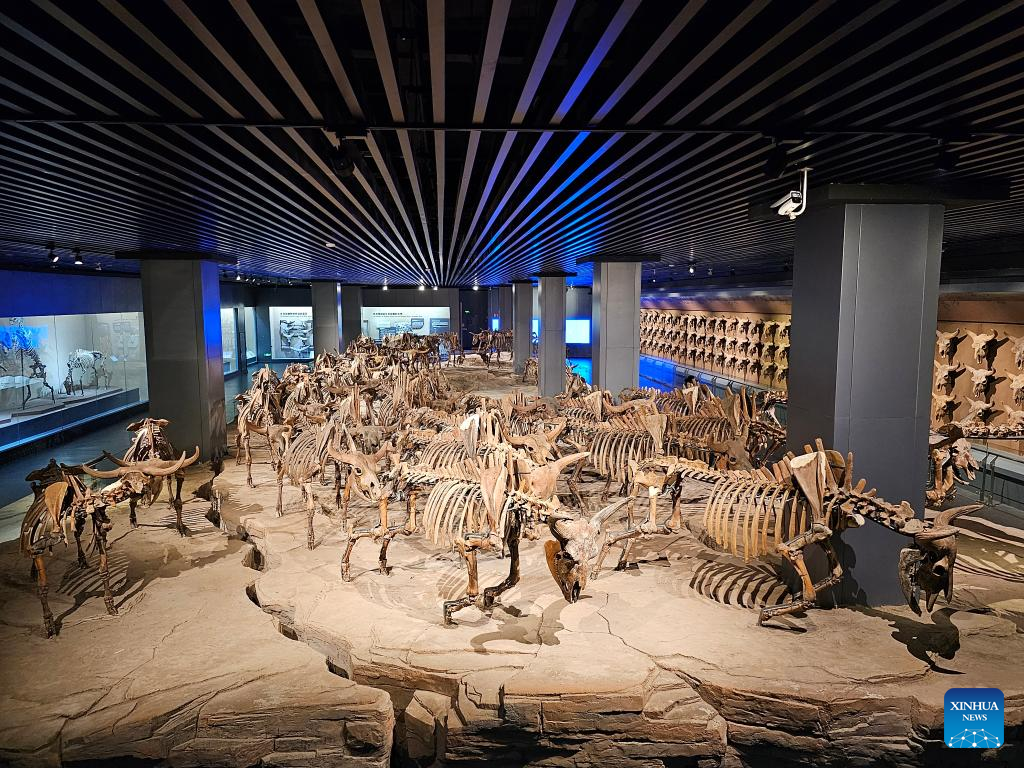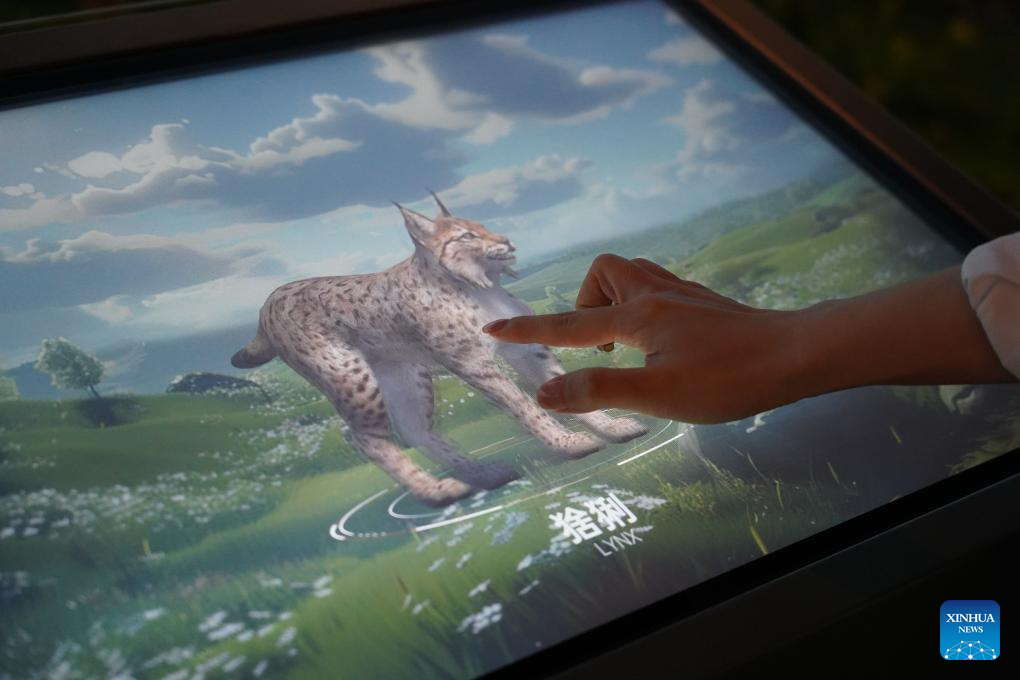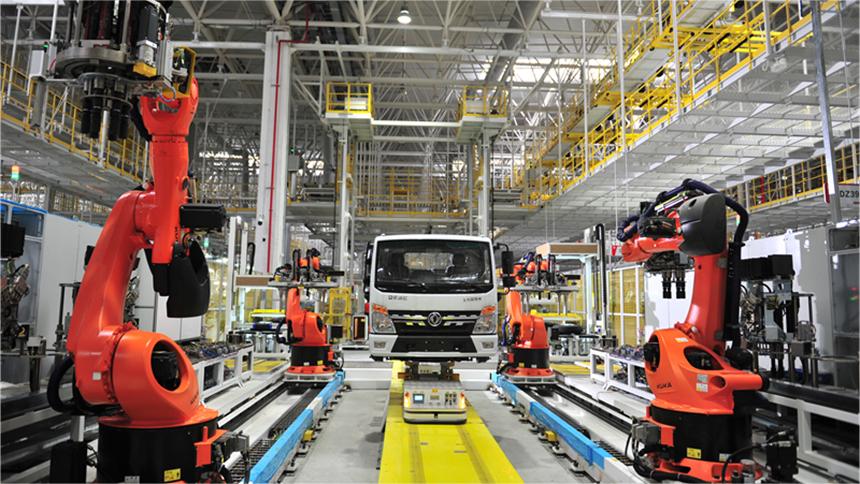Digital museum brings prehistoric animals back to "life"

Gigantic mammoth skeletons are on display in the exhibition hall at Daqing Museum in Daqing City, northeast China's Heilongjiang Province, June 5, 2024. (Xinhua/Sun Xiaoyu)
HARBIN, June 13 (Xinhua) -- Upon entering the Daqing Museum in northeast China's Heilongjiang Province, tourists are immediately awed by the sight of gigantic mammoth skeletons standing prominently in the exhibition hall, their majesty and grandeur enhanced by thunder sound effects.
To provide visitors with an immersive experience, the museum uses cutting-edge technologies like augmented reality and holographic projection to virtually bring the ancient animal that has been extinct for over 10,000 years back to life.
In another section of the museum, over 50 bison fossil skeletons create a spectacular scene depicting "large herds of bison rushing."
"When hunted by hyenas, the bison herd keeps the weak and the young in the center while foraging or running, with the strong ones protecting them," explained Zhang Fengli, curator of the museum, adding that when setting up exhibits, they focus on conveying the unique expression of each fossil skeleton and their relation with the group.
Next to the skeletons is a digital kiosk. With a simple touch on the screen, the original state of the bison's figure, bones, and muscles is displayed. When switched to running mode, the fossil skeleton changes into a vigorous, lifelike animal on the screen.
Boasting a collection of over 100,000 fossils spanning 43 species, the museum serves as a focal point for historical exploration and scientific inquiry. It has amassed over 90 percent of the species of the Quaternary period mammal fossils discovered in northeast China.
The Quaternary period, which began about 2.58 million years ago, is the latest chapter in the history of the Earth. In this period, the magnificent ancient lakes, vast grasslands, and wetlands in northeast China nurtured ancient animals such as mammoths, woolly rhinoceros, and northeast China bison.
Since 2022, the museum has used over 10 different types of digital technologies to display and publicize its collections in digital and interactive forms, creating an incredible experience for visitors.
"With the development of science and technology in recent years, we have introduced creative ideas and technical means to enhance the influence of the museum's exhibits," Zhang said.
Here, visitors are greeted with more than mere fossil displays and text introductions; they can enjoy a three-dimensional and innovative experience, brought to life through diverse digital technologies.
"Traditional museums often fail to captivate children. With the new digital technologies, we can pique their curiosity through an immersive experience and help them better understand relevant exhibits," said Gao Yan, a staff member of the museum.
As digital technologies like augmented reality and virtual reality continue to advance, museums will employ increasingly diverse presentation methods to captivate visitors and immerse them in the stories of the past through futuristic technologies, according to Li Haitao, an executive from GooestTech, a digital media solutions provider that has empowered over 500 museums nationwide.

Bison fossil skeletons are on display at Daqing Museum in Daqing City, northeast China's Heilongjiang Province, May 29, 2024. (Xinhua/Sun Xiaoyu)

A screen showing the original state of the bison's figure, bones, and muscles is displayed at Daqing Museum in Daqing City, northeast China's Heilongjiang Province, May 29, 2024. (Xinhua/Sun Xiaoyu)

A visitor learns about the lynx on a digital device at Daqing Museum in Daqing City, northeast China's Heilongjiang Province, June 5, 2024. (Xinhua/Chen Zhihao)
Photos
Related Stories
Copyright © 2024 People's Daily Online. All Rights Reserved.









